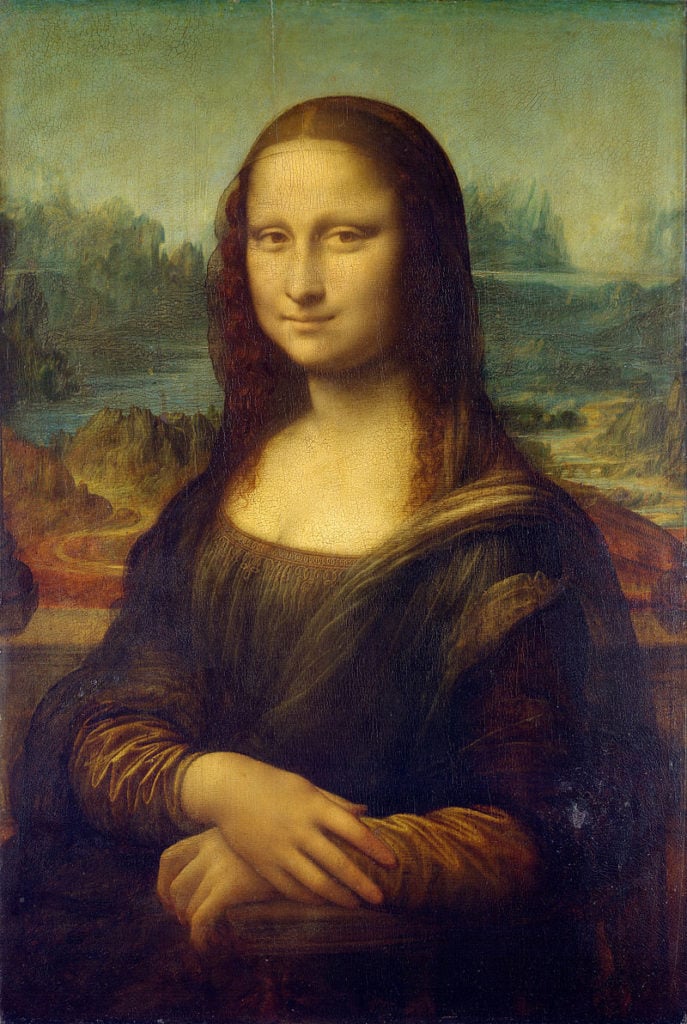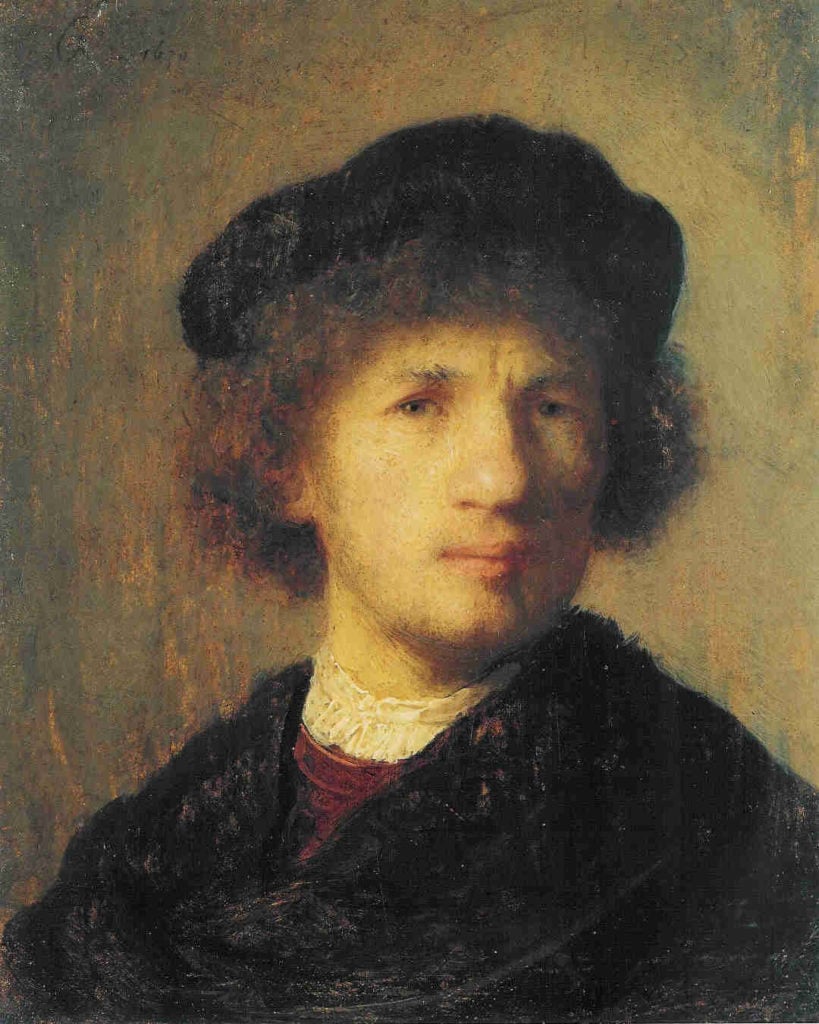
Art World
In Honor of the ‘Oceans 8,’ Here Are 6 Improbable Art Heists That Actually Happened
Stories of dastardly schemes that even Hollywood can't compete with.

It’s a familiar scene. Clad in a black bodysuit and stocking cap, a stealthy figure slinks into the cavernous museum, leaps through a matrix of laser-beam security censors, slinks down the echoing halls of a museum, and makes off with a priceless masterpiece—all without tripping the alarm. While most real thieves aren’t quite so nimble, some of their exploits read like Hollywood scripts—from rappelling into empty galleries, playing cat-and-mouse games with police, and using inside-men to gain access.
You don’t have to be well versed in the art world to know about the infamous St. Patricks Day heist at the Isabella Stewart Gardener Museum—which remains the priciest art robbery ever in the US, and is still unsolved—while the subject of art heists is constantly being mined for TV and movie stars to live out their Thomas Crown Affair fantasies. To celebrate the premiere of Oceans 8, with its rollicking robbery staged at the Met Gala, here are some historical art heists that actually happened.
1. The Patriotic Pillager

Leonardo da Vinci, Mona Lisa (1503–1517). Courtesy of the Louvre, via Wikipedia Commons.
When: August 21, 1911
Where: The Louvre, Paris
What: Leonardo da Vinci‘s Mona Lisa
How: Three Italian men shuttered themselves in a supply closet overnight, and when the museum staff vacated the museum, the thieves executed their pillage. The ringleader of the job was Vincenzo Perugia, who had been hired to install the protective glass intended to shield the famous portrait. His role in the heist eluded police for years—until he tried to sell Mona Lisa and was promptly arrested.
In his defense, Perugia pled guilty only to being a true Italian patriot; he was under the mistaken impression that the painting had been stolen by Napoleon, and only wanted to do right by his heritage.
2. Kidnapping St. Bartholomew

Paul Gaugin’s Woman Brooding (1891). Courtesy of Wikimedia Commons.
When: May 17, 1972
Where: Worcester Art Museum, Massachusetts
What: Rembrandt’s St. Bartholomew, Picasso’s Mother and Child, and two works by Paul Gaugin, Brooding Woman and Mademoiselle Manthey.
How: Florian (Al) Monday, a career criminal, dispatched two of his small-time crook cronies into the Worcester Art Museum with instructions to “snatch-and-grab” the institution’s crown jewel, Rembrandt’s St. Bartholomew, and a few other works within grabbing-distance. The catch? Monday had supplied his accomplices with a gun, loaded with a single bullet. The gun was only meant to be a showy accessory, until a suspicious security guard got in the way, and suffered a gunshot wound—making the crime the first armed art robbery in history.
Later, Monday absconded to a pig farm in Rhode Island, stashing his bounty in a hayloft when he realized no one would purchase the stolen goods. In another surprising twist, all of the stolen paintings were recovered—something that (sadly) rarely happens in the real world.
3. A Crook Who Think’s He’s a Scream

Edvard Munch, The Scream (1893). Courtesy Wikimedia commons.
When: February 12, 1994
Where: The National Museum, Oslo
What: Edvard Munch‘s The Scream
How: In 1994 Norway was hosting the Winter Olympics, and as the country was gearing up to watch the opening ceremony, a troupe of masked robbers broke into the museum, making a beeline for Edvard Munch’s The Scream.The men easily overwhelmed the solitary security guard, and in 50 seconds flat the bandits were gone—but not before leaving a note that simply read, “Thousand thanks for the poor security.”
The ringleader was an ex-soccer player with a penchant for Munch; Paal Enger had been arrested in 1988 for stealing the artist’s painting The Vampire. Shortly after carrying out the 1994 robbery, Enger took out a classified ad announcing the birth of his son “with a scream,” unable to resist taunting the authorities further—the painting was recovered three months later after an international sting operation.
4. The Swindle in Sweden

Rembrandt van Rijn’s Self portrait (1630). Nationalmuseum Stockholm.
When: December 22, 2000
Where: National Gallery Stockholm, Sweden
What: Two paintings by Pierre-Auguste Renoir and a self-portrait painted by Rembrandt van Rijn. At the time, the estimated value of the three works was $47 million.
How: This heist has all the makings of a cinematic blockbuster. Just before it closed, thieves rushed into the waterfront museum toting submachine guns and sporting balaclavas. Within a matter of moments, they snatched three paintings, and fled to a motorboat that had been stashed outside, ready for their escape. The thieves had set up remote-detonated car bombs across the city to distract police while they made their move.
All of the works were eventually recovered, first when Swedish police recovered Renoir’s The Conversation in 2001, and later in 2005, when undercover agents posed as collectors, and nabbed the criminals in a sting operation.
5. Goldfinger Poaches Picasso

Pablo Picasso’s Portrait de femme, Jacqueline. Courtesy of Wikimedia Commons.
When: February 27, 2007
Where: Private Residence, Paris
What: Pablo Picasso‘s Maya a la poupee (Maya with doll) and Portrait de femme, Jacqueline
How: In the middle of the night, thieves broke into the apartment of Picasso’s granddaughter, Diana Widmaier Picasso, and made off with more than $66 million worth of her grandfather’s artwork, including two paintings. Bizarrely, the thief turned out to be a man named Abdelatif Redjil, aka “Goldfinger,” who had held Princess Diana’s hand following the car crash that killed her ten years prior.
6. Spiderman Ensnares Paris

Amedeo Modigliani, Woman with a Fan (detail) (1919), was one of the five works stolen in 2010 from the Musee d’Art Moderne de la Ville de Paris. Photo courtesy Wikimedia Commons.
When: May 19, 2010
Where: Musée d’Art Moderne, Paris
What: Five paintings: Picasso’s Le Pigeon aux Petits-Pois, Fernand Léger’s Still Life With Candlestick, Matisse’s La Pastorale, Amadeo Modigliani’s Woman with a Fan, and George Braque’s Olive Tree near Estaque.
How: The French thief Vjeran Tomic, known as “Spiderman” was responsible for what then deputy culture minister Christophe Girard called “a serious attack on the heritage of humanity,” when he lifted five paintings, worth more than $116 million from the Paris museum. The acrobatic burglar got his pseudonym for scaling the sides of buildings around Paris, pilfering jewels and other valuable objects, but wasn’t caught until an anonymous tip regarding the 2010 heist.
The paintings were destroyed by an accomplice. Tomic was sentenced to eight years in jail.
Follow artnet News on Facebook:
Want to stay ahead of the art world? Subscribe to our newsletter to get the breaking news, eye-opening interviews, and incisive critical takes that drive the conversation forward.
SHARE

No comments:
Post a Comment